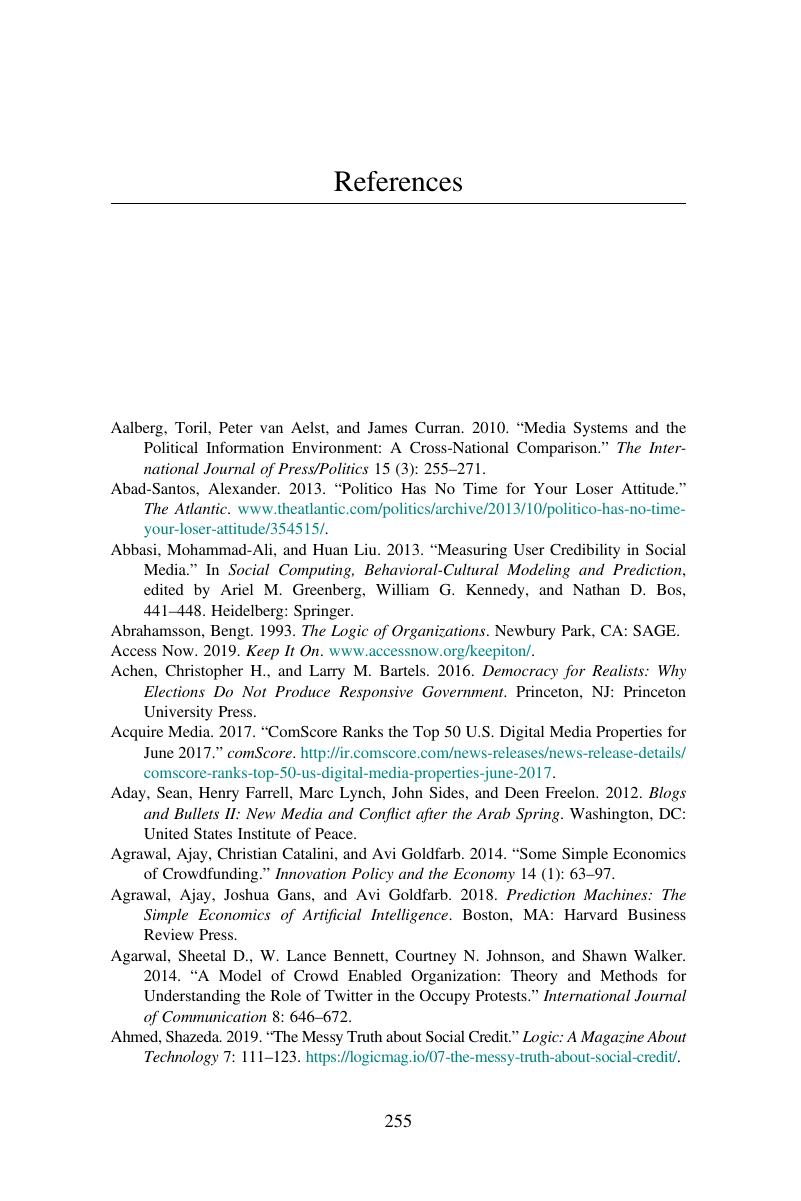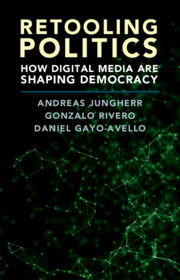Book contents
- Retooling Politics
- Retooling Politics
- Copyright page
- Contents
- Acknowledgments
- 1 The Rise of Digital Media and the Retooling of Politics
- 2 The Flow of Political Information
- 3 Reaching People
- 4 The Effects of Political Information
- 5 Digital Media and Collective Action
- 6 Changing Organizations
- 7 Data in Politics
- 8 Digital Media and Democracy
- 9 Digital Media in Politics
- References
- Index
- References
References
Published online by Cambridge University Press: 17 June 2020
- Retooling Politics
- Retooling Politics
- Copyright page
- Contents
- Acknowledgments
- 1 The Rise of Digital Media and the Retooling of Politics
- 2 The Flow of Political Information
- 3 Reaching People
- 4 The Effects of Political Information
- 5 Digital Media and Collective Action
- 6 Changing Organizations
- 7 Data in Politics
- 8 Digital Media and Democracy
- 9 Digital Media in Politics
- References
- Index
- References
Summary

- Type
- Chapter
- Information
- Retooling PoliticsHow Digital Media Are Shaping Democracy, pp. 255 - 322Publisher: Cambridge University PressPrint publication year: 2020



